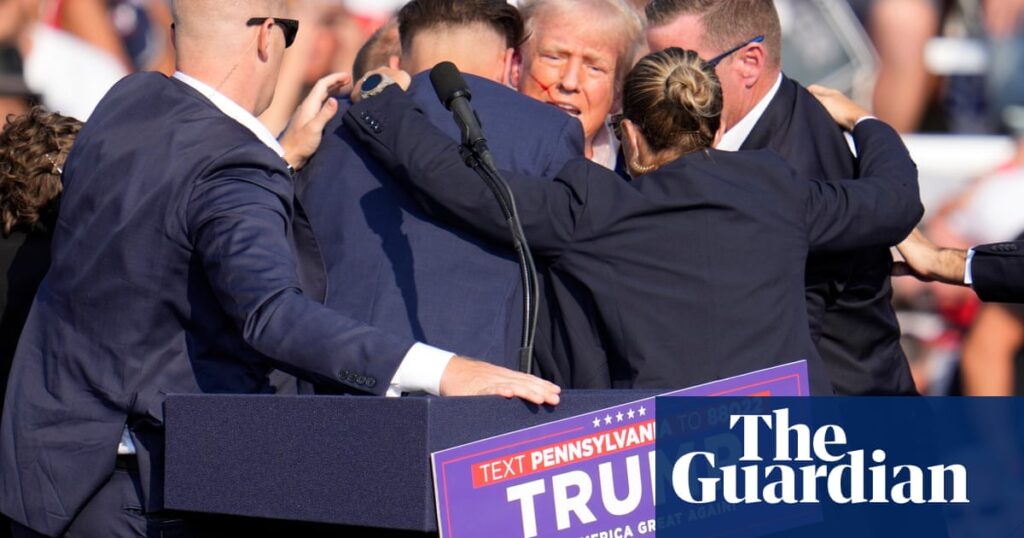An internal Secret Service investigation has determined that the service experienced multiple significant communications outages prior to the July 13 assassination attempt on President Donald Trump in Butler, Pennsylvania.
The Washington Post reported Saturday, citing anonymous officials, that the former president’s security forces had not instructed local police to guard the roof of the building used by the shooter.
The Secret Service was considering placing heavy equipment and flags between the stage and Thomas Matthew Crooks’ perch.
It is installed on the roof of a glass factory 300 feet away, blocking views from the roof.
But when supervisors arrived in Butler for the rally, they noticed that the cranes, trucks and flags were not positioned in a way that blocked their view.
Crook then climbed onto the roof and fired seven shots from a rifle, killing one spectator, wounding Trump in the ear and wounding two others before being shot dead by a Secret Service sniper.
The internal investigation, known as the Mission Assurance investigation, found that unlike the military-backed security forces that protect the sitting president and vice president, the Secret Service uses a separate command center from local police to protect politicians who are not in office.
But in Butler, Trump’s security forces had no way to communicate with local police providing security around the perimeter of the venue.
In a stunning lack of communication, reports of a suspicious person with a rangefinder were not communicated to the Secret Service an hour before Trump was scheduled to speak, but Crooks was able to get onto the roof. It wasn’t until rally-goers called local police to report a man “crawling like a bear” on the roof that the man opened fire on Trump, one of which sliced off his ear.
Instead, local counter-snipers were instructed to text a photo of Crooks to a Secret Service agent, who did not listen to any radio transmissions from local police attempting to pursue Crooks. Butler County police also reportedly warned the Secret Service that they could not station patrol cars next to the building, but received no further instructions.
Kimberly Cheatle resigned as director of the Secret Service a few days after the shooting, citing that the slope of the roof was too steep for agents to manage. Acting Director Ronald Lowe said in a statement to the media, “The Secret Service cannot afford the contradiction of ‘zero failure missions’ while at the same time enabling our special agents and uniformed officers to do more with less to accomplish our vital national security mission.”
Get the most important US news and highlights delivered straight to your inbox every morning
Privacy Notice: Our newsletter may contain information about charities, online advertising and externally funded content. For more information, please see our privacy policy. We use Google reCaptcha to protect our website and are subject to the Google Privacy Policy and Terms of Use.
After newsletter promotion
The report also found that the Secret Service was reluctant to step up security for Trump after reports of Iranian plots to assassinate political candidates. Rowe testified before Congress in late July that he was “embarrassed” by security lapses and vowed to reform Secret Service practices. Two separate congressional investigations are also looking into security lapses.
The Trump campaign has sometimes been forced to cancel or postpone events over concerns about inadequate security, and Trump campaign aides have said they have requested increased security for years. First lady Jill Biden and Vice President Kamala Harris were both in Pennsylvania that day, lending credence to claims that Secret Service personnel were stretched thin.
“I think the American people will be shocked, surprised and appalled by what we will report about the Secret Service’s failures in the assassination attempt on a former president,” Sen. Richard Blumenthal, a Democrat, told Fox News after being briefed on the internal investigation.



